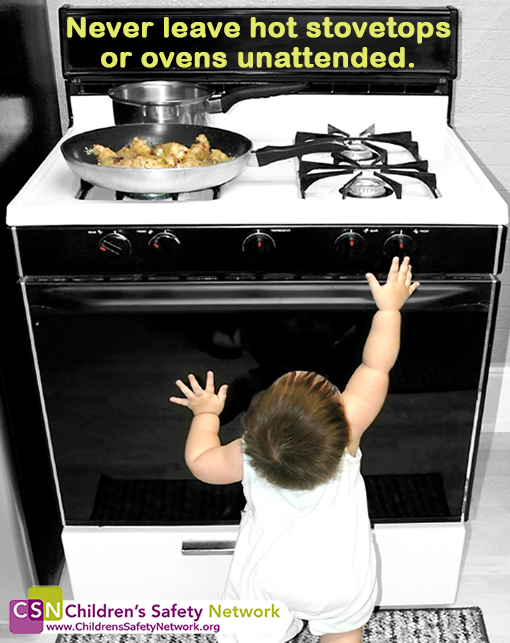Guard Against Burns
About half of all accidental burns that occur each year happen to kids under age 4. That's why you shouldn't leave a small child unattended around hot appliances, such as a grill or a stove, and why you should keep kids at a distance while you're cooking. Also keep sparklers away from children.

How to Treat: First-degree burns are painful and red but don't blister. To care for these minor burns, hold the area under running cool tap water for about five to 10 minutes. There's no need to use topical creams or ointments, and don't apply ice, as this can lead to frostbite and delay healing. Place a loose, sterile dressing over the site, and keep it clean with soap and water as it heals.
Special Concerns: Second-degree burns are deeper and typically blister (don't pop the bubbles). Contact your child's doctor if you suspect this. Third-degree burns are even more serious and appear white, waxy, or black. Often, they are so deep that the area feels numb. These burns require immediate medical attention.
Avoid Poisonous Plants
To further help you sidestep these summer spoilers, here's information on recognizing these plants: Poison ivy grows as a vine or shrub in the grass or on trees. Poison oak grows only as a shrub, usually in the western United States. Poison sumac is a tall shrub or small tree found in wooded areas of eastern states.
The good news: the rashes (caused by oils from these plants) aren't contagious. Once the skin has been washed and clothing is removed, the rashes can't spread.
- Poison Ivy -- Look for three pointed, notched leaves per stem.
- Poison Sumac -- Six to 12 leaves grow in pairs with a single leaf topping stems.
- Poison Oak -- Looks like poison ivy, but tips of leaves are rounded.
How to Treat: If your child's skin comes in contact with one of these plants, you have a window of about 10 minutes to wash away the rash-causing oil. If you don't catch it in time, a rash may develop within 12 hours. Use topical hydrocortisone cream and an oral antihistamine to calm the itch.
Special Concerns: If the rash involves the eyes or if it covers a large portion of her body, contact your pediatrician. Oral steroids may be recommended for severe cases.
